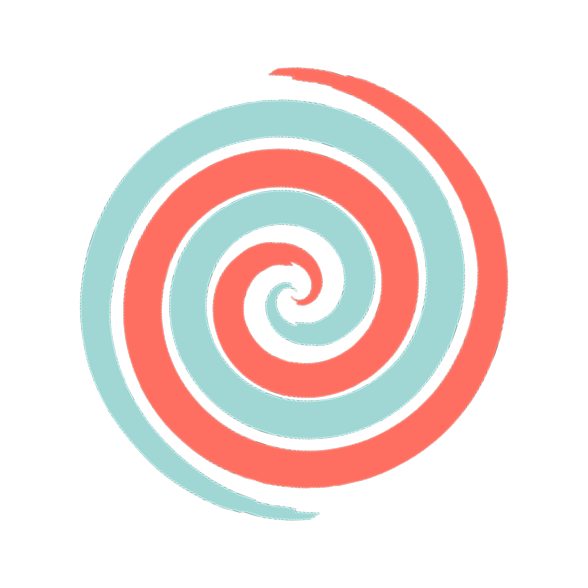How do you know if your pain is cognitive or physical and what can you do about it?
January 21, 2025
“How do you know if the pain is physical or cognitive?”, asked a movement student of mine who has struggled with chronic foot pain for 8 years. They have taken up movement as a way to regain agency in their relationship with their foot and lessen the fear of hurting it. This cycle of looking at the foot, seeing a misalignment, starting to worry and correct it has been reinforced so many times, they became hyper-focused on this one aspect in their daily life not able to find any release from it.
When I was contemplating this situation and how I can help the student, I wrote down different practical ways to address it which I have gotten to know through my movement practice. Looking at my writing after, I realised that most of the things had to do with changing the mindset or way of seeing more than the physical experience.
I thought it would be valuable to share these thoughts here in the hopes that someone might benefit from them or use them as the springboard for better conclusions.
Fundamentally, all tools I came up with described three aspects of the situation: perception of pain, the language of pain and habits.
Perception of pain
Ability to perceive pain has a scientific term - nociception, and it is vital for our survival. But perception is two-directional. On the one hand, our body constantly gathers information. For example, our skin has various receptor neurons which can perceive heat, pressure, vibration, etc. The information that these receptors perceive is then passed on to the brain in the form of electromagnetic pulse through our spinal cord. So if some forces are actively harming the body, the brain knows and can act on it.
On the other hand, pain is also a belief system of what you experience in the body. Our top-down perception is governed by our attention and our actions. Pain is a subjective experience which does not arise from merely the fact that our body is perceiving things, it arises from directing attention to things that matter to us creating one integrated scene - the experience. We can also control our sensory input by acting on it and then receiving immediate feedback from the action. By choosing to read this sentence you have defined what your visual input was.
Practically speaking, you can try observing if your perception in the “painful” situation is more top-down or bottom-up. If visual input triggers your “pain loop” all the time, try as an experiment to eliminate it for a while and track what the triggers of pain are then.
Language of pain
Based on the two-way mechanism of perception, we can find some ingenious ways to crack the system. One big aspect to tackle is the language you use to think about “pain”, or how your brain narrates your painful experiences.
One way to find the new language is to look for details. Instead of labeling the experience “painful”, the weather - “bad”, and the task - “boring”, we can go more granular. In the context of physical pain, you can go to the level of sensations. Chances are if you try to observe the different more subtle sensations, your “pain” won’t be the same every time anymore, which already weakens the charge of the whole experience. This search for granularity will also force you to develop higher sensitivity and fine motor control in the area leading to a more intelligent and coordinated body that can deal with and prevent harm more effectively and precisely.
Another possible way to reframe your life with pain is to ascribe different meaning to its existence. This largely depends on what is meaningful for you as a person. For some “moving through pain” will be an empowering narrative, while for others “exploring mew movement possibilities” will be much more inviting.
The second optimistic narrative can be made way more convincing by integrating the idea of affordances in your life. Affordance is a term from interaction design which describes the characteristics of how an object can be used or interacted with. For example, you know that the buttons of the remote control have to be pressed for it to switch on the tv. It is just one way of using it though as clearly demonstrated by any kid who would probably first start with banning it against the floor.
You can take this idea into the physical scenario you are struggling with and imagine you are a kid. I will give a personal example of applying this logic. When I had a knee issue, for some days I could place very little weight on my foot. I turned these days into a game of training a pattern called the “ghost step” where you skip over your foot barely touching the floor with it. I started ghost walking, biking and running and discovered a lot of other ways to move my foot without actively loading it, like pulling on my arms when biking, for example. By doing this, I added a new experience of play and exploration to compete with my experience of pain, and I was no longer consumed by it.
Habits
In the end, all of these ideas only work when they are integrated into your daily life, if they become your new beliefs. Beliefs stem from habits. You need to know what your current habits are and what new habits you want to acquire with regards to your situation.
I won’t go into detail on how to do that here, but James Clear’s advice on forming and breaking habits would be a great instruction.
Conclusion - imagine along
Put your hand in the box.
When I was contemplating this situation and how I can help the student, I wrote down different practical ways to address it which I have gotten to know through my movement practice. Looking at my writing after, I realised that most of the things had to do with changing the mindset or way of seeing more than the physical experience.
I thought it would be valuable to share these thoughts here in the hopes that someone might benefit from them or use them as the springboard for better conclusions.
Fundamentally, all tools I came up with described three aspects of the situation: perception of pain, the language of pain and habits.
Perception of pain
Ability to perceive pain has a scientific term - nociception, and it is vital for our survival. But perception is two-directional. On the one hand, our body constantly gathers information. For example, our skin has various receptor neurons which can perceive heat, pressure, vibration, etc. The information that these receptors perceive is then passed on to the brain in the form of electromagnetic pulse through our spinal cord. So if some forces are actively harming the body, the brain knows and can act on it.
On the other hand, pain is also a belief system of what you experience in the body. Our top-down perception is governed by our attention and our actions. Pain is a subjective experience which does not arise from merely the fact that our body is perceiving things, it arises from directing attention to things that matter to us creating one integrated scene - the experience. We can also control our sensory input by acting on it and then receiving immediate feedback from the action. By choosing to read this sentence you have defined what your visual input was.
Practically speaking, you can try observing if your perception in the “painful” situation is more top-down or bottom-up. If visual input triggers your “pain loop” all the time, try as an experiment to eliminate it for a while and track what the triggers of pain are then.
Language of pain
Based on the two-way mechanism of perception, we can find some ingenious ways to crack the system. One big aspect to tackle is the language you use to think about “pain”, or how your brain narrates your painful experiences.
One way to find the new language is to look for details. Instead of labeling the experience “painful”, the weather - “bad”, and the task - “boring”, we can go more granular. In the context of physical pain, you can go to the level of sensations. Chances are if you try to observe the different more subtle sensations, your “pain” won’t be the same every time anymore, which already weakens the charge of the whole experience. This search for granularity will also force you to develop higher sensitivity and fine motor control in the area leading to a more intelligent and coordinated body that can deal with and prevent harm more effectively and precisely.
Another possible way to reframe your life with pain is to ascribe different meaning to its existence. This largely depends on what is meaningful for you as a person. For some “moving through pain” will be an empowering narrative, while for others “exploring mew movement possibilities” will be much more inviting.
The second optimistic narrative can be made way more convincing by integrating the idea of affordances in your life. Affordance is a term from interaction design which describes the characteristics of how an object can be used or interacted with. For example, you know that the buttons of the remote control have to be pressed for it to switch on the tv. It is just one way of using it though as clearly demonstrated by any kid who would probably first start with banning it against the floor.
You can take this idea into the physical scenario you are struggling with and imagine you are a kid. I will give a personal example of applying this logic. When I had a knee issue, for some days I could place very little weight on my foot. I turned these days into a game of training a pattern called the “ghost step” where you skip over your foot barely touching the floor with it. I started ghost walking, biking and running and discovered a lot of other ways to move my foot without actively loading it, like pulling on my arms when biking, for example. By doing this, I added a new experience of play and exploration to compete with my experience of pain, and I was no longer consumed by it.
Habits
In the end, all of these ideas only work when they are integrated into your daily life, if they become your new beliefs. Beliefs stem from habits. You need to know what your current habits are and what new habits you want to acquire with regards to your situation.
I won’t go into detail on how to do that here, but James Clear’s advice on forming and breaking habits would be a great instruction.
Conclusion - imagine along
Put your hand in the box.

I hold at your neck the gom jabbar. Poison needle, instant death. Remove your hand from the box and you die.
What’s in the box? Pain.
What will you do?
What’s in the box? Pain.
What will you do?
